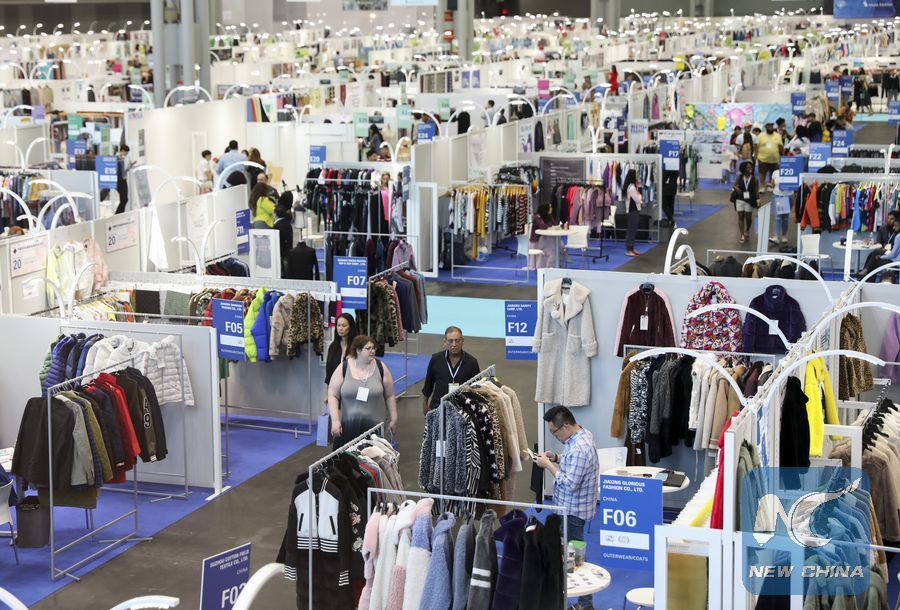
People visit the 20th China Textile and Apparel Trade Show in New York, the United States, July 22, 2019. The 20th China Textile and Apparel Trade Show in New York opened on Monday in Manhattan's Javits Center, serving as a platform to showcase the latest industrial trends and help Chinese companies explore the U.S. market. Over 500 Chinese garment, fabric and textile companies are attending this year's trade show, which will run through Wednesday. Another 300 or so companies from 16 countries and regions also joined the show with an exhibition area of 30,000 square meters. (Xinhua/Wang Ying)
NEW YORK, July 25 (Xinhua) -- When Li Xiaofeng, managing director of a Chinese fabric company, attended this year's Texworld USA, an annual international textile show in New York, he was not alone this time.
Apart from a large group of Chinese peers, middle-aged Li was also accompanied by his Bangladeshi partner M. A. Taher, president and chief executive officer of garment producing company Farseeing Knit Composite Ltd., who shared the exhibition booth with Li.
And the sharing was no accident.
Ever since Li came back alone from last year's Texworld USA, he has been thinking of bringing a foreign partner to the next exhibition, so that the two could work together to better explore the U.S. market amid increasing market risks and competitions.
Li said while large textile companies could open new plants in other countries, small and medium ones like his company Nantong Fenglan Textile Co., Ltd. choose to tap their resources on hand to stay competitive.
Running his company in Nantong city in east China's Jiangsu province, Li has formed partnerships with two Bangladeshi textile plants starting from 2012 to better explore international opportunities, and Taher's company was one of them.
Importing fabrics from Li, Taher said his factory was responsible for sewing, cutting, finishing and exporting.
Taher, who was also the chairman of garment manufacturer and exporter Shangu Group, said his whole businesses now provide over 10,000 jobs and he imports around 95 percent raw materials from China to meet the demand for his garment plants.
Such partnership was further strengthened when Li and Taher met up this time in New York. While Li presented his own textiles, Taher brought a number of T-shirts and other garments to the exhibition booth.
"The presence of textile and garments would have exhibition visitors stay longer and talk more at our booth," and we would then have a higher chance of sealing a deal, Li told Xinhua.
His hunch was right. A U.S. customer Li developed in 2018 also came to this year's Texworld USA and placed an order of 6,600 pieces on site.
Li was happy about it, saying the order could be seen as an endorsement for his high-quality products.
And so was Taher. The teamwork was like a composite work, he said, adding that he and Li would make good delivery, good products and achieve success together.

